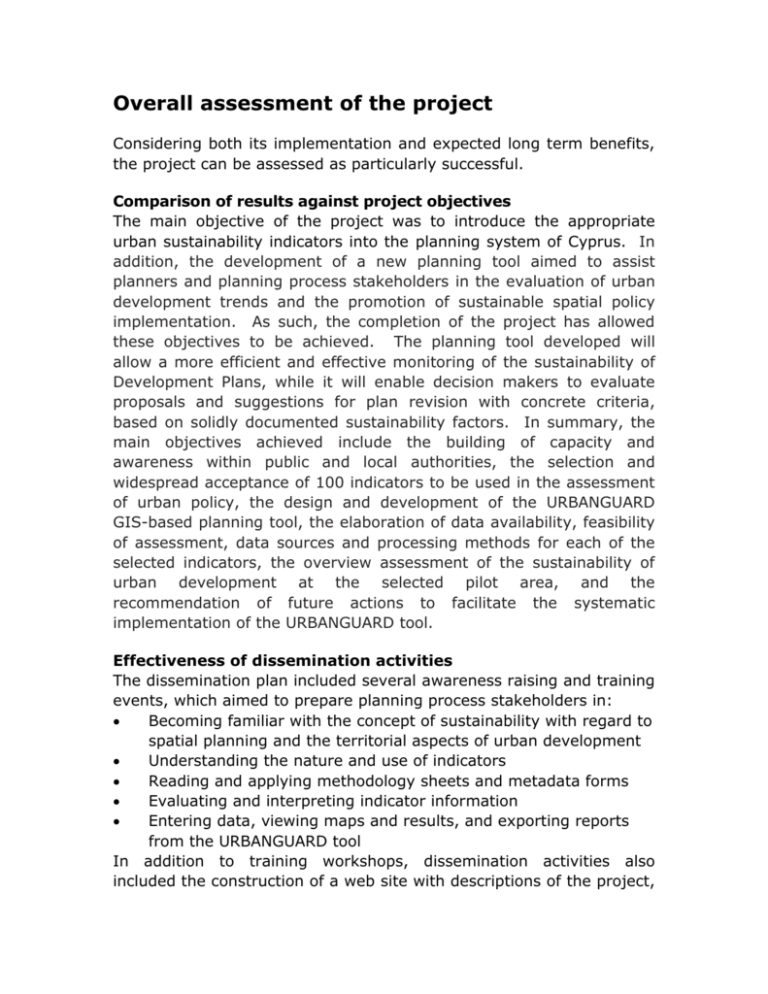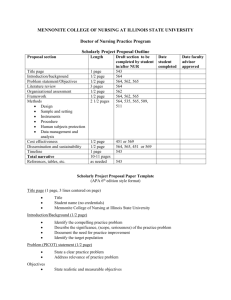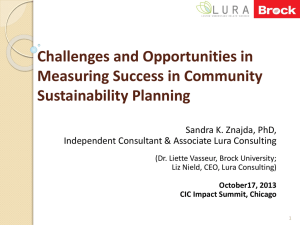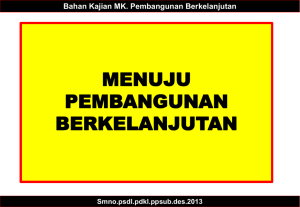2-OVERALL-ASSESSMENT
advertisement

Overall assessment of the project Considering both its implementation and expected long term benefits, the project can be assessed as particularly successful. Comparison of results against project objectives The main objective of the project was to introduce the appropriate urban sustainability indicators into the planning system of Cyprus. In addition, the development of a new planning tool aimed to assist planners and planning process stakeholders in the evaluation of urban development trends and the promotion of sustainable spatial policy implementation. As such, the completion of the project has allowed these objectives to be achieved. The planning tool developed will allow a more efficient and effective monitoring of the sustainability of Development Plans, while it will enable decision makers to evaluate proposals and suggestions for plan revision with concrete criteria, based on solidly documented sustainability factors. In summary, the main objectives achieved include the building of capacity and awareness within public and local authorities, the selection and widespread acceptance of 100 indicators to be used in the assessment of urban policy, the design and development of the URBANGUARD GIS-based planning tool, the elaboration of data availability, feasibility of assessment, data sources and processing methods for each of the selected indicators, the overview assessment of the sustainability of urban development at the selected pilot area, and the recommendation of future actions to facilitate the systematic implementation of the URBANGUARD tool. Effectiveness of dissemination activities The dissemination plan included several awareness raising and training events, which aimed to prepare planning process stakeholders in: Becoming familiar with the concept of sustainability with regard to spatial planning and the territorial aspects of urban development Understanding the nature and use of indicators Reading and applying methodology sheets and metadata forms Evaluating and interpreting indicator information Entering data, viewing maps and results, and exporting reports from the URBANGUARD tool In addition to training workshops, dissemination activities also included the construction of a web site with descriptions of the project, its results and the URBANGUARD tool, providing an access point to interested parties worldwide; the preparation of publications and brochures for dissemination to stakeholders and the general public; as well as the organisation of a conference and information day, attended by one hundred planning process stakeholders and other participants including planning professionals, environmentalists and decisionmakers, who were invited to learn about the project, its achievements and the GIS tool. These dissemination facilities were successful not only in informing the stakeholders but also in achieving general consensus on the use of URBANGUARD tool as well as acceptance of the selected sustainability indicators. Benefits and long term sustainability The principal and immediate benefits expected from the implementation of the URBANGUARD system concern its role as a catalyst for the incorporation of transparent sustainability parameters into the spatial planning process. Indeed, the developed system of indicators and associated tool, the experience and awareness-raising derived from the project and the multitude of opportunities to consult with public and local authorities, as well as other planning process stakeholders, have improved both the capacity and commitment of the Department of Town Planning and Housing to implement sustainability assessment indicators. During its development, the project was primarily concerned with capacity building and thus no direct impacts on the environment have resulted at this early stage of its lifetime. However, significant long-term sustainability benefits are foreseen to be achieved through the ongoing application of the URBANGUARD tool, which aspires to provide a driving force towards sustainable spatial development. Given the commitment towards this achievement and the wide acceptance of the URBANGUARD tool within other public and local authorities, its continued application will have significant positive environmental and social benefits.











